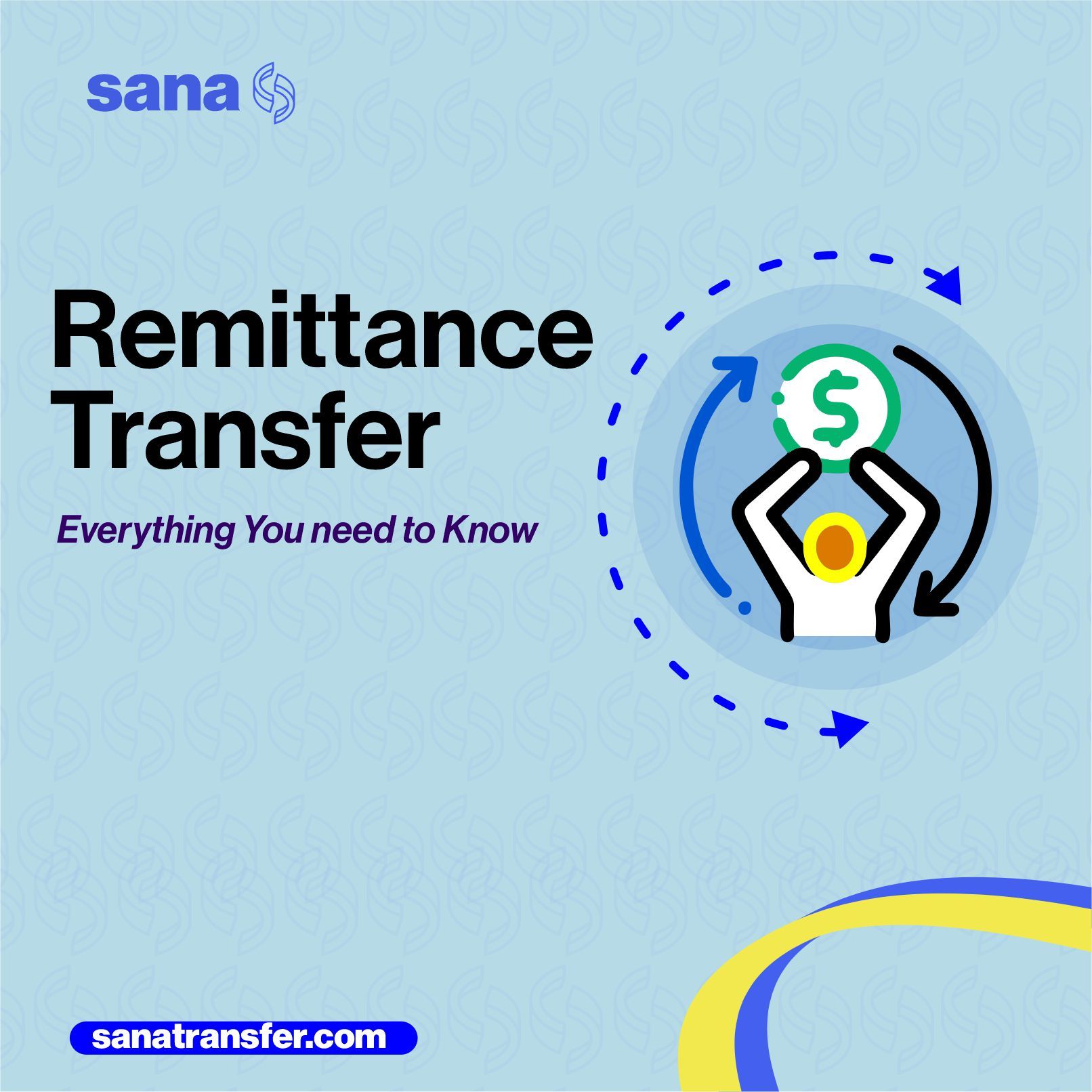What is Remittance Transfer?
A remittance transfer is primarily an international money transfer done electronically.

New trends and ways to send money home are setting in as more people continue to migrate abroad seeking better work opportunities. The process of sending money internationally was cumbersome in the past but thanks to technology, cross-border transfers are much easier and faster. With technology, immigrants can send money internationally through remittance transfers.
Understanding Remittance Transfers
Before we delve into other aspects of remittance transfer, let's provide an answer to the question, “what is remittance transfer?”.
A remittance transfer is primarily an international money transfer done electronically. This method of payment has become very valuable for immigrants who want to send money to their loved ones in their home countries. With remittance transfers, you can send money across borders promptly and easily.
Usually, immigrants and expatriate workers send part of their salary back home to their relatives via remittance transfers. Also, foreign workers use this method to send money to pay for goods and services in their home countries. This simple transaction is not just convenient but very fast. Parents, spouses and children no longer have to wait for weeks, or months for their relatives to return back to their home countries. They now have instant access to any money needed to take care of their basic needs.
What is a Remittance Transfer Provider?
As an immigrant looking for credible ways to execute international money transfers, the first step is to seek a reliable remittance transfer provider. A remittance transfer provider is an agency or company that helps to send cash from its clients to businesses and individuals who live in other countries.
Institutions like credit unions, banks, and other financial service organizations are great examples of remittance transfer providers. They complete over 100 remittance transfers for their customers every year. SanaTransfer is easily a popular choice among immigrants due to its relatively cheap and easy-to-use remittance service options. Sign up now to enjoy better rates and faster payouts.
How do Remittance Transfer Providers work?
Although the general regulations of remittance transfer providers vary depending on your country, there are still some similarities between most of them. Here are some things to expect when dealing with any credible remittance transfer provider:
1. A remittance transfer provider will provide you with full disclosure of details like the exchange rates, fees, as well as the final amount that your loved ones will receive once the payment is completed.
2. If anything goes wrong with the transfer, like your loved ones not getting the supposed amount back in your home country, your remittance transfer provider must perform a full investigation.
3. Some providers allow you to cancel the transfer request within a specific time limit. If you cancel your payment, expect that the full amount will be returned to you (terms and conditions apply which vary from one provider to another).
If you just migrated abroad and are seeking a way to send cash to your family in your home country, ensure that you find and settle for a credible remittance transfer provider like SanaTransfer.
While the regulations for these providers generally vary from country to country and the type of remittance, a credible remittance transfer provider will provide you with the necessary security and transparency you need during the transaction process. This will grant you peace of mind knowing that your hard-earned money is in safe hands.
How to send a Remittance Transfer
There are three ways you can send remittance transfers. Although each of these ways has different pros and cons, the bottom line is that the money you sent will get to its destination.
Here are the ways you can send a remittance transfer:
1. Banks or credit unions
Banks are one of the oldest means of sending remittances. Although they provide quality services, some immigrants find it hard to track down their banks after migrating to new countries. Hence, they rather use other financial institutions for convenience. This is where money transfer services come in handy.
2. Money transfer services
Usually, money transfer services are provided by transfer agencies like SanaTransfer, Western Union, Wise, and WorldRemit. Essentially, these agencies were created to simplify the cumbersome steps involved in bank transfers. While processing bank transfers internationally involves a lot, money transfer services help by simplifying each step in the process.
Instead of going through the stress of searching for the right bank, handling currency conversion rates, and waiting for days before the process is complete, money transfer services execute this process instantly.
Also, it is easier to walk into any branch of a money transfer service provider, pay in money, and allow them to complete the transaction for you. Better still, you can download their apps and make cross-border transfers from the comfort of your couch. Unlike banks, you don't have to go through a lot of processing before the transfer is made.
For convenience and flexibility of cross-border transfer, money transfer services are your best bet. They make everything easy and seamless for you.
3. Cheques and money orders
This is the third method you can use for inward and outwards foreign remittance. Although the process of Cheques and money orders are similar, using money orders to send payment internationally is still faster. This is because cheques take longer for the money to be made available. Nevertheless, both options are great if you want to cut the cost of processing at the expense of speed. Although these options are cheap, they are very slow.
Essentially, the more money you send Internationally, the more cost it attracts. Contrarily, money orders just require you to pay a flat fee, and usually, you can send cheques for free. This saves you a lot of money when executing larger transactions.
However, most migrant workers send remittances in smaller, regular amounts. In this case, it is better and safer to make digital payments through a credible remittance transfer provider. Sending large amounts of money via post presents you with a large risk because international mail usually takes a longer time to reach its destination. Therefore, it has a higher chance of getting delayed, lost, or worse, stolen.
Overall, remittances are not just important for individuals, but for countries at large. Remittances help to boost the economy of many developing countries around the world.
What are the Fees associated with Remittance Transfers?
You will be required to pay certain fees for every remittance transfer you make. Usually, these fees vary depending on the remittance transfer service provider you use.
Just make sure that you ask the agency about their fees before you start processing your remittance transfer. Here are the fees your remittance transactions are likely to incur:
1. Sending remittance fees
Some financial agencies will need you to pay a flat fee to send your remittance transfer. In this situation, the amount of money you want to send and its destination doesn't really matter. The fee is a fixed amount and you must pay it to the provider. Usually, your transfer provider charges you this fee before they initiate your transaction.
Other financial institutions may need you to pay a percentage fee, generally called a spread. The spread is a currency trade rate that the transfer agency charges the sender before they send the remittance transfer. Also, remittance service providers may charge you a fee based on your principal amount.
For instance, imagine you are sending 100 CAD from Canada to Ghana and at the time of processing, 1 CAD was equal to 10 Cedis. Without paying the percentage fee, the receiver is expected to get 1000 Cedis. However, with the spread, the recipient will only get 900 Cedis.
2. Receiving remittance fees
Besides the fees you have to pay when sending remittances, the receiver of the remittance may also have to pay a token. These remittance fees are charged by the financial institution or bank where your recipient collects the money. Just like senders' fees, they could either be charged as flat fees or a percentage of the money received. Usually, these charges can be reduced, or removed by sending cash to and from the same financial institution.
If the bank you make use of to send remittances back to your family at home does not have any established banking system with the bank you use in your home country, you may have to transfer the funds via a third-party bank that connects both banks. This may include extra costs and expenses. The easiest way you can avoid any added cost is to send and receive money via the same provider.
Essentially, the cheapest way to remit money is through money transfer services like SanaTransfer. Rates are far cheaper and delivery is swift compared to traditional means like banks, checks, credit unions and money orders.
Recommended - Understanding Foreign Remittance Tax
Remittance vs. Bank Transfer: What is the difference?
Besides - what is a remittance transfer - another major question people ask frequently is what is the main difference between a standard remittance transfer and a conventional bank transfer.
Here are the main differences between these two:
1. Transfer speed
Generally, you can make remittance transfers within minutes because it is instant. However, this is not the same for international bank transfers. Remittance transfers may take up to 5 days to be completed, but they usually need at least 24 hours to be processed. If you are time-cautious, using money transfer services will serve you better.
2. Transfer convenience
Banks and credit unions usually require a series of processes to remit money to specific countries. The process may be slow and inconvenient due to formalities and documents that they may request before approving cross-border transfers. Remittance on the other hand is usually swift, and faster as most processes are completely digitized.
3. Transfer price
While the cost of sending the transfer can vary, a remittance transfer generally incurs a fee for just the sender (can either be a flat fee or the spread). On the other hand, Bank transfers usually impose both a flat fee and a specific percentage of the amount of money you send. If you want to send large amounts of money, banks are more expensive in the long term.
Although banks transfer and remittances have relatively competitive exchange rates, remittances are cheaper on average.
Final Thoughts
Basically, remittance transfer is the process of executing international funds transfers electronically. When it comes to remitting money internationally, your best bet is to find a remittance service that is safe, fast, transparent, and affordable. This will ensure that the process is convenient and hassle-free for both you and your recipient.
Join 1000+ users across Canada in sending money back to family and loved ones using the SanaTransfer app.
Sign up now to get started or download the app for Android or iOS.
